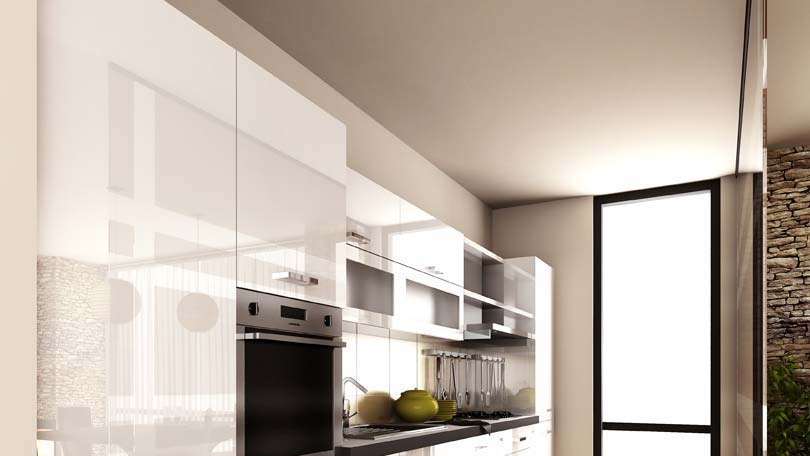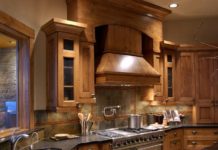
Do you know what you need to prepare for when wiring your kitchen for the future? When you consider what life was like less than twenty years ago and what it’s become today, most of us wouldn’t have had a clue that DVDs, CDs, LCD readouts, the Internet and cell phones would be as common to our lives as the rising and setting of the sun. The fact is the world of new mass media and high-tech, which continues to develop, expand and morph, has altered greatly the manner in which we work, play and entertain, influencing every aspect of our lives. And that includes our lives in the kitchen.
Dishwashers, refrigerators, microwaves, coffee makers and much more are ruled by a wealth of high-tech advances. Overall, families have adjusted quickly and easily to these changes. But what will the next wave bring? If you’re going to be remodeling your kitchen, you’ll want to ensure that your new cooking area is as ready as it can be for the next wave of high technology.
Basic but Special Needs
According to the National Electrical Code (NEC) kitchens have specific wiring requirements that are different from any other room in the house. That’s due to the fact that kitchen appliances pull more power than most other electrical devices in your home and also because the NEC recognizes that the kitchen can be an accident waiting to happen. Those who created the code don’t want homeowners stringing extension cords, cutting corners on power availability and creating dangerous overloads in their kitchens.
Outlets can’t be anymore than 12-feet apart. Countertops have stricter rules regarding outlet spacing and location. Any counter top that’s 12 inches or longer must have its own outlet and outlets can’t be more than 24 inches apart. In terms of wiring, those on your countertop have to be connected to two different circuits, with one side of the outlet being connected to one circuit and the other side to the second circuit. This is achieved by running a 240-volt, three-wire cable, which allows for two 120-volt circuits. The circuit would then be wired into a double breaker.
Outlets that are located within six feet of the kitchen sink must include ground fault circuit interrupter (GFCI) protection, which provides for an immediate shutdown of the circuit when it becomes overloaded.
Minimum Requirements
A properly wired kitchen requires a minimum of eight circuits. That includes at least two 20-amp, 125-volt lines for your small appliances and one 15-amp, 125-volt circuit for your kitchen lights. The dishwasher and garbage disposal are given their own dedicated 15-amp, 125-volt circuit and the microwave and refrigerator must each be supported by their own individual 20-amp, 125-volt circuits. The biggest power consumer is the electric range, which needs a 50-amp, 250-volt line. If you’re using a gas range, then you can install a basic 125-volt circuit. However even if you are using a gas range, you’ll want to also put in the circuitry for an electric range, giving you more versatility and an added feature if in the future you sell your home to someone who prefers to cook on an electric stove or a unit that utilizes both gas and electric burners.
Networking and Smart Appliances
The future in kitchen wiring is literally connected to the high-tech world of the Internet, email, cell phones and more. In the not-too-distant future, your appliances will be connected to the World Wide Web via Broadband or fiber optics.
Here’s some of what you can expect from the smart kitchen. Refrigerators that offer entire entertainment centers, including cable TV, a CD and DVD player and a digital radio. A smart refrigerator that can monitor the freshness and expiration dates of stored items and a smart oven that can be turned on remotely via your cell phone or computer. Refrigerators may also track inventory, create shopping lists and present recipes you can create by using the contents of your fridge. You’ll be able access just about any and all of this information when away from home.
Two other smart kitchen innovations, both of which are paperless, include a digital calendar that appears on a large screen and that can be accessed remotely and a recipe projection device that downloads recipes off the Internet and projects them onto a chosen kitchen surface. Additionally, you’ll be able to install a complete energy monitoring system that allows for the diagnosis of energy consumption, the calculation of costs and the control of how and energy is used in your kitchen.
Programmable lighting fixtures that change as the day progresses, built-in coffee makers and wine dispensers and sensors that will notify you that you left a burner on and allow you to shut it off remotely are all part of the kitchen-of-the-future concept. If you want to lose weight, consume less salt or ensure a product doesn’t contain something to which you’re allergic, the smart kitchen will also be able to help you do all of that and more.
By the way, some of these devices and innovations currently exist, but they are expensive and limited in terms of manufacture, while others are still being developed.
Preparing for the Unknown
If you are renovating your kitchen, then the best time to prepare for the future is when the walls are open. Run Internet cables and put in Internet outlets. Also, it’s not a bad idea to run a conduit or two through which you can fish additional wires or cables.
The fact is it is difficult to say exactly what the kitchen of tomorrow will be like. Most agree that people seem to be spending more time in that space, and they’re not satisfied with simply using it for cooking. Many people now multitask in this room, watching TV, working, eating and more. But wiring your kitchen for the future is not that difficult. The primary thing you have to do is make sure that you give yourself options, running cable lines and providing for easy access to the kitchen by installing open conduit paths. The simple fact is that you never know exactly what the future holds, but you do want to be ready for it.





